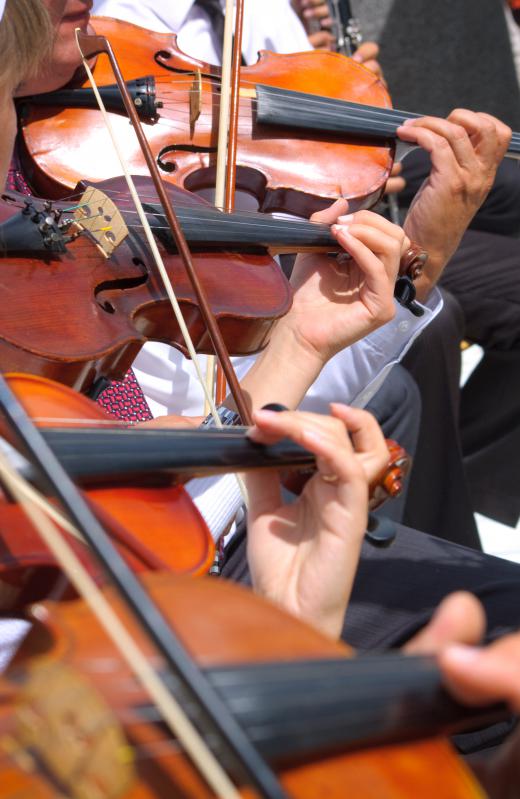An orchestra pit is a sunken area in a theater which is designed to accommodate an orchestra to accompany stage performances. The orchestra which performs in an orchestra pit is sometimes known as a pit orchestra, and depending on the size of the pit, the orchestra may be smaller than a traditional full orchestra, as many orchestra pits do not have room for a full complement of musicians.
Classically, an orchestra pit is located in front of the stage, allowing the performers to clearly see the motions of the conductor. Because the stage is often elevated and the orchestra pit is lowered, the distance between the pit and the stage can be quite a fall, as some unwary performers discover. In some cases, the orchestra pit may be covered, and this can sometimes be useful for tricks on stage, as a trapdoor can be designed to lead into the orchestra pit, allowing actors to appear and disappear from the middle of the stage.

In the pit, the walls are specially designed to provide the best possible acoustics, ensuring that the sound of the orchestra flows through the entire venue without overwhelming the performance on stage. Many orchestra pits are also designed to have reasonably low decibel levels, allowing musicians to work without fears of damaging their hearing. Typically, a small platform in the pit accommodates the conductor, so that he or she can be seen by all of the musicians, who may sit in chairs or on bleachers, depending on the design of the pit.
Some pits are set up on hydraulic lifts, allowing them to be raised and lowered. This can be very useful in theaters which offer a mixture of performances, as the pit can be used to extend the stage or the seating when an orchestra is not required. On orchestra pit doesn't have to be located directly in front of the stage, either, although many patrons expect to see the orchestra performing in front of the stage; when an orchestra pit is elsewhere in the theaters, the conductor's movements may be broadcast on monitors visible from the stage, so that the actors can follow cues.
Working in an orchestra pit can be challenging, as people often have to endure close quarters in the pit. Musicians must be able to work well with each other, and to keep cool in a variety of situations, as they must coordinate with the actors on stage. If something goes wrong on stage, the musicians in the pit will need to react appropriately, to help mask the problem so that the audience is not aware of the issue.
